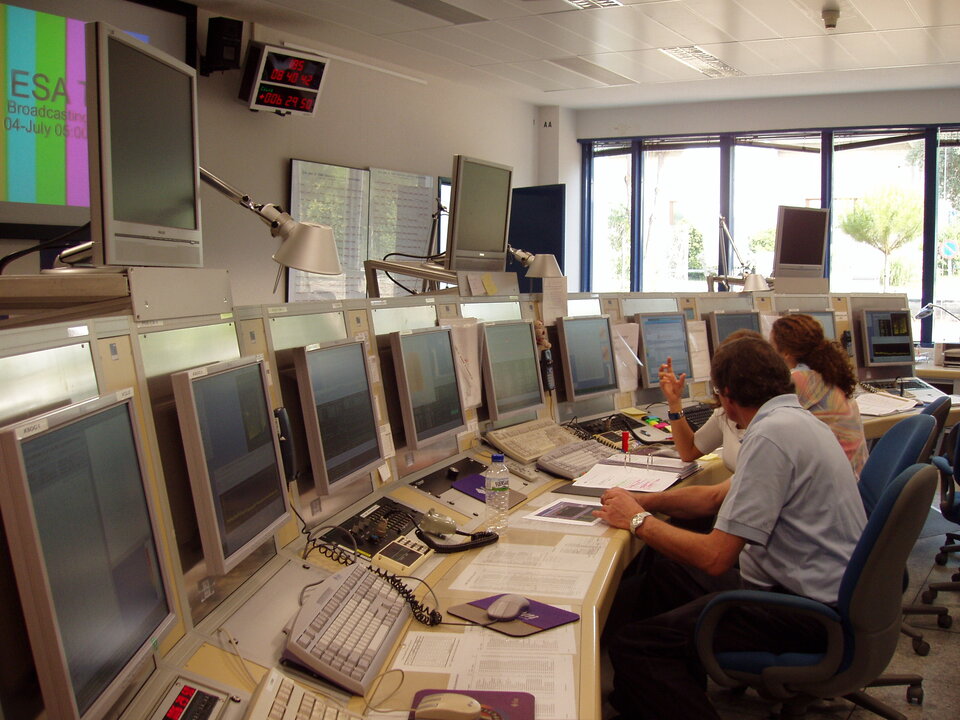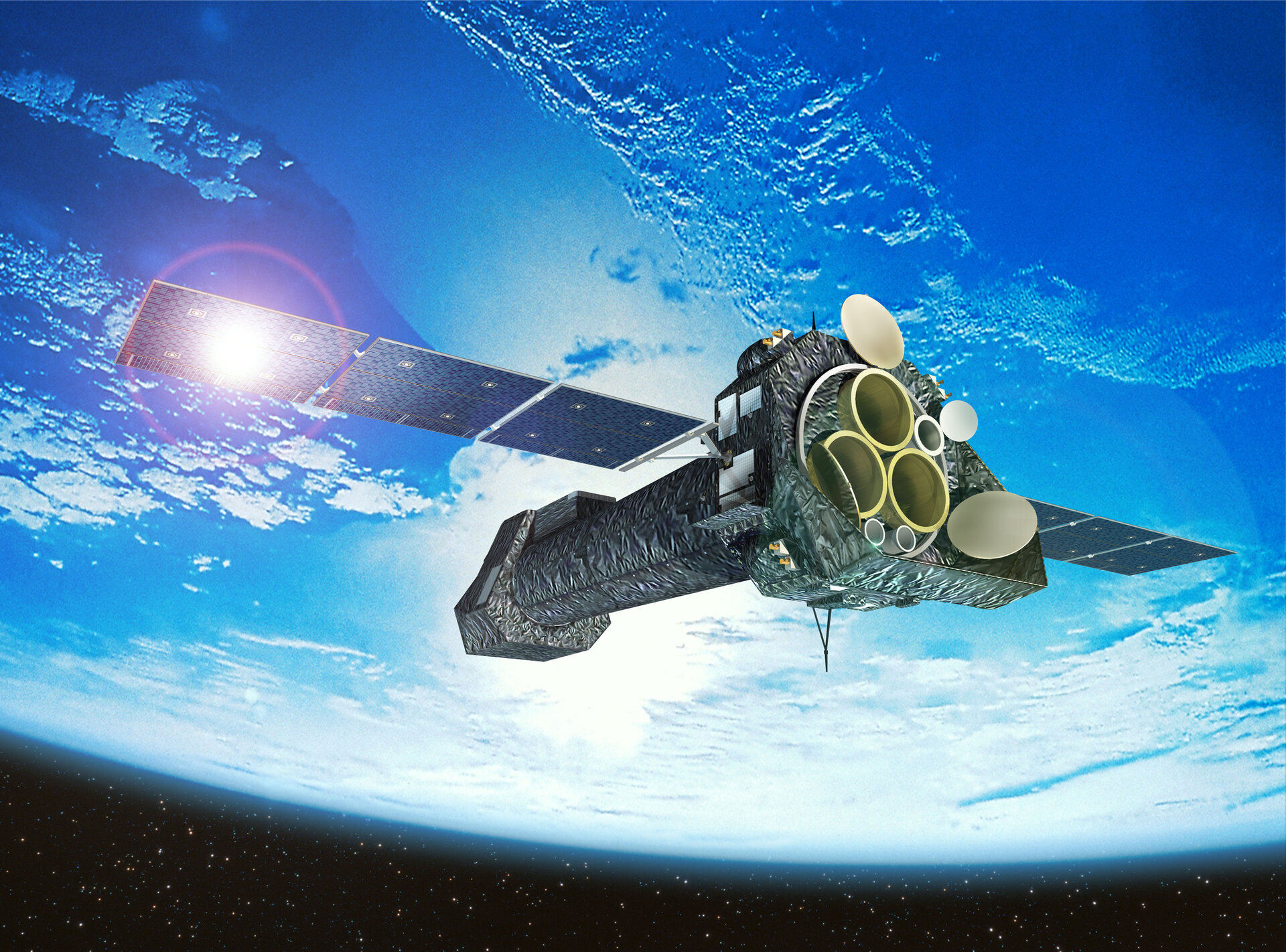ESA's XMM-Newton reduces cost, extends science value
In December 2005, ESA's highly successful XMM-Newton was given a four-year extension. The longer life necessitated a first-ever "in-flight" upgrade to the spacecraft's mission control software.
Last year, ESA's Science Programme Committee decided to extend operations of ESA's hugely valuable X-ray observation mission, XMM-Newton, for four years, until 31 March 2010.
The decision was largely based on the incredible science results that XMM-Newton has provided since launch in 1999, with over 1,000 scientific papers having been published based on XMM-Newton data (see related news link at right).
The life extension meant, however, that mission controllers at ESA's Space Operations Centre (ESOC) would be faced with maintaining and running XMM-Newton's mission control software — developed in the 1990s — into 2010, over a decade later. And if the spacecraft remains healthy, it could additionally be extended well into the next decade.
Fighting rising maintenance costs

XMM-Newton's first mission control system was based on ESA's older standard, SCOS-1 (Spacecraft Operating System-1).
The ground-based hardware and software used to control any space mission, known collectively as the ground segment, is a complex 'system of systems' involving high-end workstations, multiple databases and lots of carefully managed, finely tuned software. A central operating system controlled from the Mission Operations Centre (MOC) at ESOC ties these elements together and runs 24 hours per day over a mission's life span.
A complicating element in the overall migration to SCOS-2000 was the requirement to simultaneously upgrade similar systems in the XMM-Newton Science Operations Centre (SOC) at ESAC, ESA's Space Astronomy Centre in Villafranca, Spain.
The SCOS-1-based operations infrastructure would require increased maintenance budgets in the coming years as fewer outside contractor companies were able to, or had interest in, maintaining the software. Furthermore, contract engineers who originally knew how to operate the software have already upgraded their skills and many have moved on to more modern systems.
In the meantime, newer and far more capable software, SCOS-2000, had been developed.
"SCOS-200 is maintainable into the future, is compatible with current and future computer hardware and is more flexible; it's also the new ESA standard," says Oscar Ojanguren, Deputy Spacecraft Operations Manager for XMM-Newton at ESOC.
Other ESA missions had already implemented the new SCOS-2000 mission control software and spacecraft controllers, system analysts and engineers at ESOC were already trained on it.
As a result, as it became obvious that the XMM-Newton mission would be extended, it also became obvious that the mission's ground segment would have to upgrade to SCOS-2000.
XMM-Newton: First time lucky
XMM-Newton was slated to be the first ESA mission to convert to a new operating system during in-flight operations.
The challenge was that no one had ever replaced the mission control software in mid-mission before, and senior management had required that the upgrade would not interrupt the flow of valuable science data from XMM-Newton.
New software fundamentally different from old

There were other challenges. The new SCOS-2000 software, for example, uses packet-based TCP/IP networking for communication with ground stations, similar to that used on the public Internet to view Web pages and exchange email; the older SCOS-1 does not.
"The SCOS-2000 software is almost totally new. It was a real challenge to upgrade, and meant we also had to upgrade software at the Science Operations Centre at ESAC as well," says Oscar.
The complex upgrade project began in late 2002 at ESOC and early 2003 in ESAC; development work ran though late 2004. The upgrade team involved flight operations and other engineers at ESOC, ESTEC and ESAC as well as extensive support from industry teams.
"Our plan was to build the new ground segment based on SCOS-2000 and get it running in parallel to the existing system, then switch it on and compare science and flight control data output. If both systems gave the same results, we could simply turn the old system off," says ESOC's Dietmar Heger, XMM-Newton's Spacecraft Operations Manager. "It was like building an entirely new ground segment for a new mission," he adds.
Smooth upgrade through strong teamwork
Despite the challenges, the upgrade proceeded as planned and by March 2005, a series of live tests had been completed using the newly implemented SCOS-2000 software to control XMM-Newton and receive science data while the older SCOS-1 system was kept in operation. "There was a lot of extra work for engineers at ESOC," says Heger, "but there was great teamwork between ESA establishments and industry support teams."
Helpfully, throughout the upgrade project, XMM-Newton itself performed flawlessly, helping to ease the work burden.
On 5 April 2005, the new SCOS-2000-based mission control system was declared fully functional and was able to control XMM-Newton full time in parallel with the older system. The main problems found by the upgrade team had been in the telecommunication links between the Mission Operations Centre at ESOC and the Science Operations Centre in Spain; SCOS-2000 itself functioned completely as expected.
In June 2005, the final switchover was made, and the XMM-Newton ground segment project ended with a successful upgrade.
The ultimate measure however, was not only the technical success of the project, but also the financial success.
Project cost under budget and on time
ESA had allocated a fixed-price contract amount of 2.0 million Euro. The project was actually concluded for less than 1.5 million Euro and was complete well in advance of the August 2005 deadline.
The XMM-Newton upgrade to SCOS-2000 illustrates that ESA, supported by its industry partners, can deliver strong maintenance cost benefits under demanding, live-mission conditions.
In 2006-2010, XMM-Newton is well-placed to continue gathering stunning new science results while ESA and ESOC benefit from the cost advantages of up-to-date and fully maintainable software and systems.
Speaking at an internal ESOC seminar in September 2005 to review lessons learned, one engineer involved in the project said: "Any upgrade project is always stressful; engineers and system users are used to the 'old' system and old way of working and so it's also a people issue; and we were successful in meeting that challenge."


